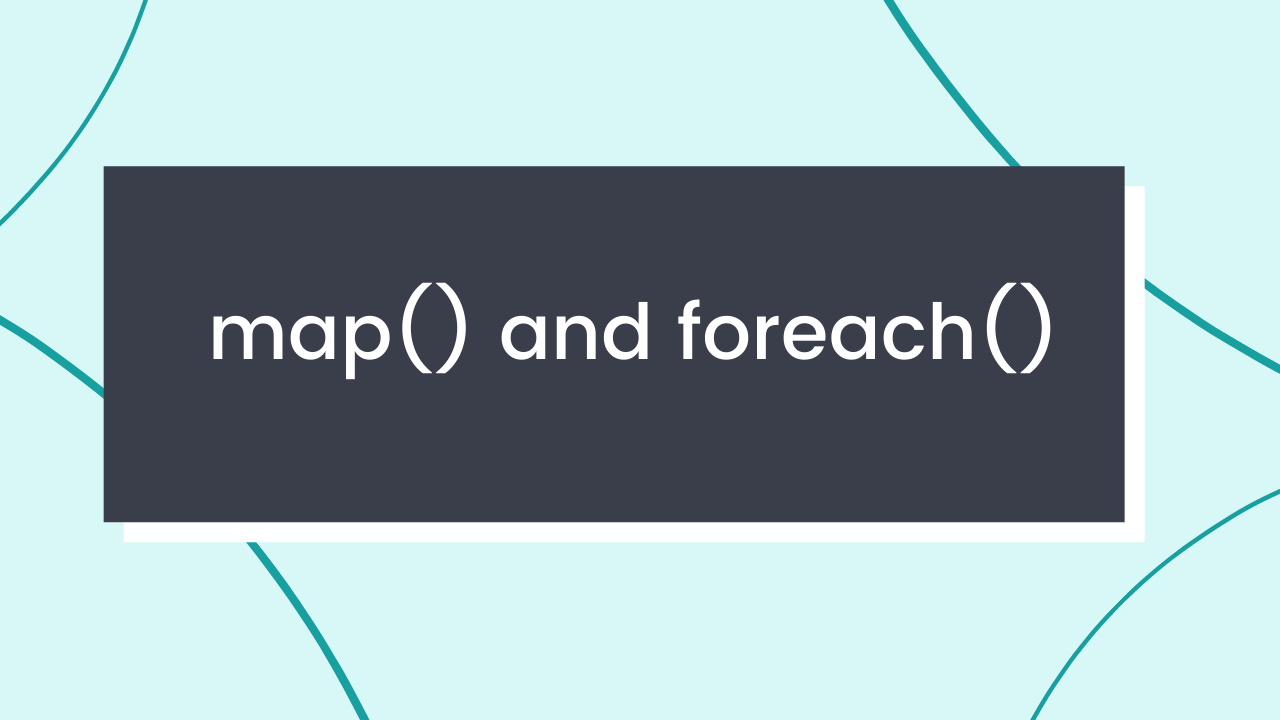Today you will discovery the difference between map(), foreach() and how these teachings made me developer better in JavaScript.
How do you know, JavaScript has something methods that help us work with arrays. The most famous are seuArray.map() and seuArray.forEach(), but that world is the bigger than you can imagine, today exists more than 10 methods that help us work with arrays 😮 (the next post I talk about these)
But for those starting out in programming, have difficult to understand the concepts and difference of two. I'm here for that, help you to understand the difference between these methods 😃
Topics
- Definition
- The return
- Trigger other methods
- Mutability
- Performance speed
- Conclusion
🏳️ Definition
forEach()
The
forEach()method performs a function provided once for each key / value pair in the Map object, in order of insertion. ref
By default, this method go through all the items in an array, like a normal loop.
map()
The
map()invokes the callback function passed by argument for each element of the Array and returns a new Array as a result.ref
The practice the method foreach and map look the same, but with the difference to return. The foreach manipulate the real date for from array and map create a new array.
📍 The return
How I talk about previously, the deffinition the method forEach() just walks over the array, while the map() return new value.
const items = [1, 2, 3, 4] const values = items.forEach(item => item * item) // return: undefined console.log(values)
const items = [1, 2, 3, 4] const values = items.map(item => item * item) // return: [1, 4, 9, 16] console.log(values)
⏩ Trigger other methods
An important difference between these two methods is that in map() you can trigger other methods, such as filter(), sort(), reduce(). In foreach() you do not have access to these methods because it does not return a value.
const items = [1, 2, 3, 4] items.forEach(item => item * item).reduce((total, value) => total + value) //return: Uncaught TypeError: Cannot read property 'reduce' of undefined items.map(item => item * item).reduce((total, value) => total + value) //return: value: 30
📌 Mutability
forEach() does not change the array in which it is called. (However, callback can do this).
map() does not change the array it is called in (although callback, if called, can do that). ref

My opinion that definition isn't totally clear, that is confusing.
To find out what doesn't change the original array, the first ones have to check how these two methods work.
The map() returns one in the array transformed with the same amount of date. In the case of forEach(), even if it returns undefined, it will change ** the original array with the callback.
Therefore, we clearly see that map() depends on immutability and forEach() is a modifying method.
🚀 Performance speed
For you to validate the speed and performance it depends on several things of the computer, the amount of date, processing, among other things. You can check for yourself with this example below to see which is faster.
const items = [1, 2, 3, 4, 5] const startForEach = performance.now() items.forEach(x => (x + x) * 10000000000) const endForEach = performance.now() console.log(`Speed [forEach]: ${endForEach - startForEach} miliseconds`) const startMap = performance.now() items.map(x => (x + x) * 10000000000) const endMap = performance.now() console.log(`Speed [map]: ${endMap - startMap} miliseconds`) //return: value: 30
🤓 Conclusion
Which one should I use? Like everything in the world: It depends. If you plan to change or use the date, it is preferable to select map(), as it returns a new array with the transformed date. But, if you don't need the new array, use forEach().
I hope this short post has helped you in some way!
Suggestions and criticisms are highly appreciated.
If there are more differences, please share them in the comments, otherwise, thanks for getting here 😍.

